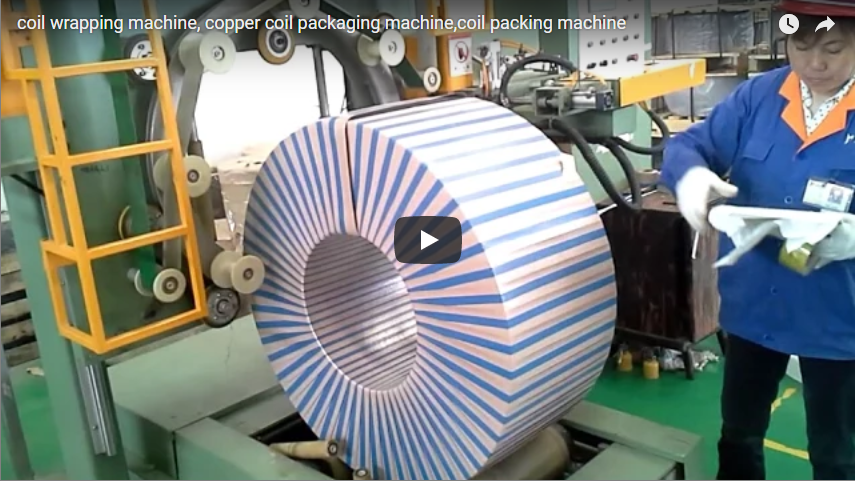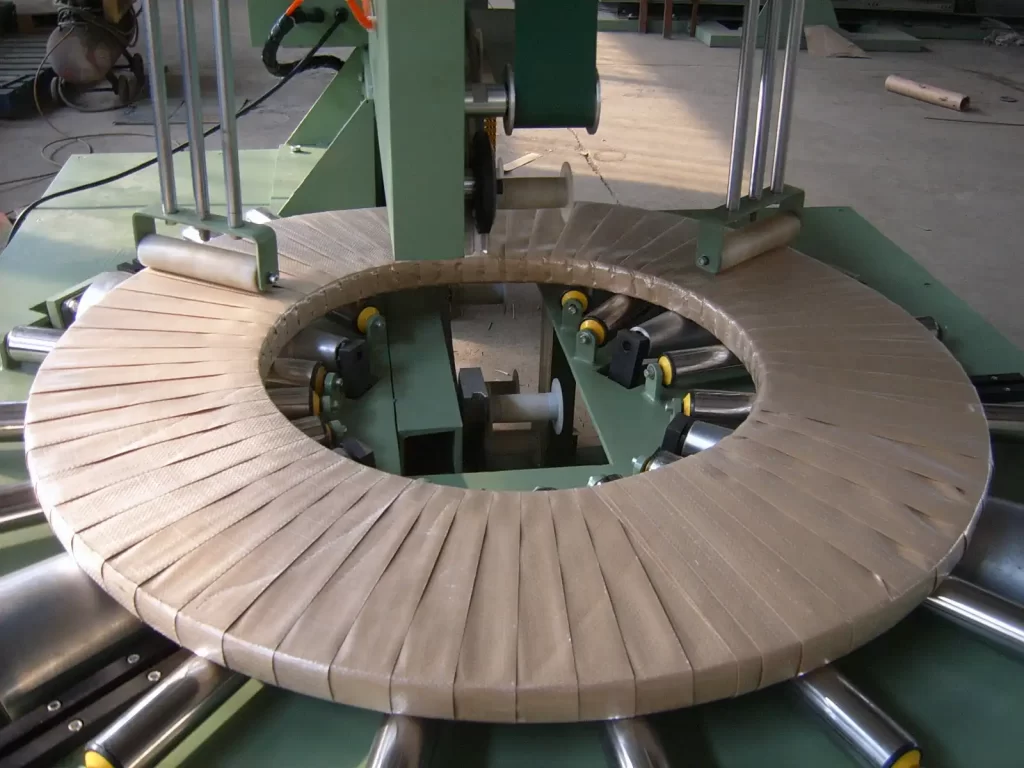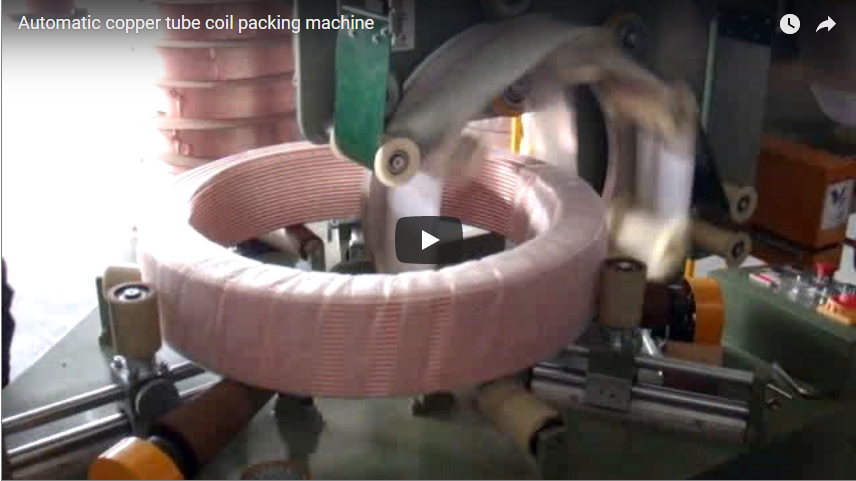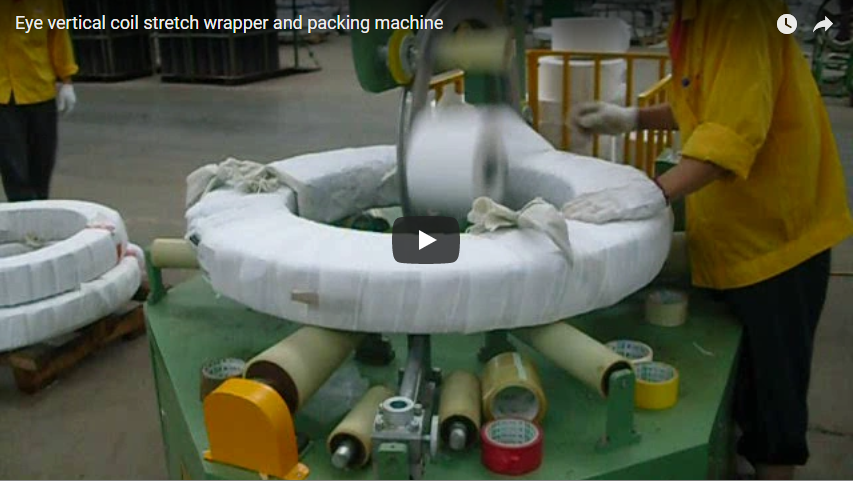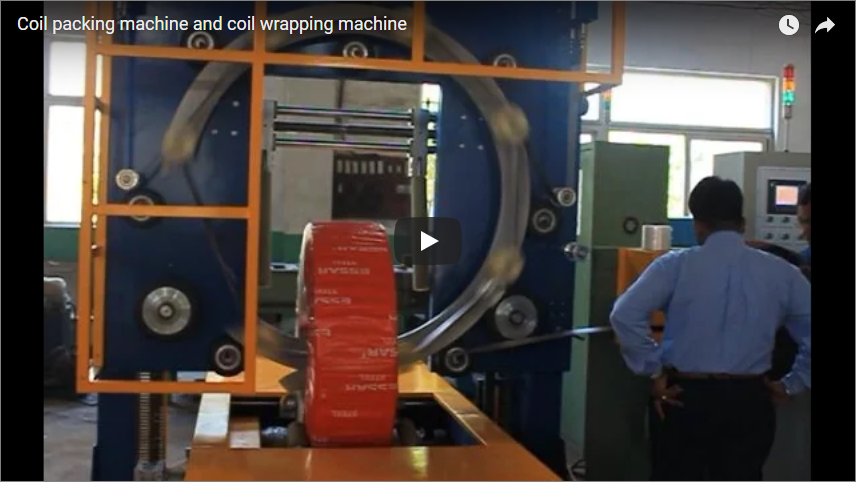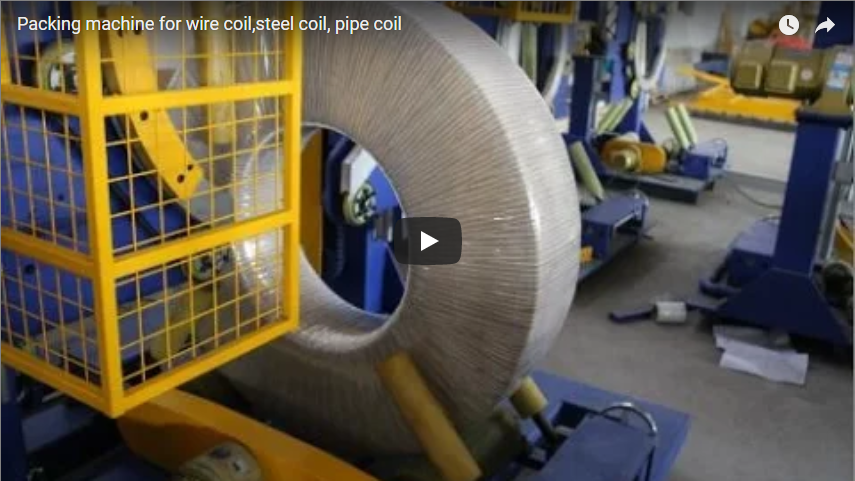Mastering Coil Protection: A Deep Dive into Eye-Through Film Wrapping Machines
In any fabrication shop or manufacturing plant dealing with coils – whether steel, aluminum, copper wire, cables, or hoses – product damage during handling, storage, and transport is a constant headache. Scratches, abrasions, telescoping, corrosion from moisture, and instability during shipping can lead to costly waste, customer complaints, and production delays. This is where specialized coil packaging machines, particularly eye-through film wrappers (also known as orbital stretch wrappers), become indispensable tools for safeguarding valuable inventory and streamlining operations.
1. How Eye-Through Coil Wrapping Works: The Mechanics
Unlike traditional pallet wrappers, an eye-through coil packaging machine is intricately designed for ring-shaped products. The core principle involves passing a roll of stretch film through the center hole (the eye) of the coil while the coil itself remains stationary or rotates slowly.
Here’s a breakdown of the typical process:
- Loading: The coil is typically loaded onto a motorized conveyor system or placed directly onto support rollers integrated into the machine. Proper positioning is crucial for a consistent wrap.
- Film Application: A rotating ring or shuttle, holding the stretch film roll and equipped with a pre-stretch mechanism, orbits around the coil's cross-section. As it rotates, it passes through the eye of the coil.
- Wrapping: The machine dispenses the stretch film, applying it directly to the coil surface with controlled tension. The film layers overlap, creating a tight, secure, and protective cocoon around the coil. The degree of overlap and film tension are usually adjustable parameters.
- Cutting and Sealing: Once the programmed number of wraps is complete, an automated system clamps the film, cuts it cleanly, and often uses a heat or pressure mechanism to seal the tail end to the coil, preventing unraveling.
- Unloading: The fully wrapped coil is then conveyed out of the wrapping station, ready for storage or shipment.
The robust structure of these machines typically includes heavy-duty frame construction to handle significant coil weights and an advanced control system (often PLC-based with a touchscreen HMI) allowing operators to fine-tune wrapping parameters for different coil sizes and types. Designed for demanding industrial environments, they often incorporate protective measures against dust, moisture, and mechanical wear.
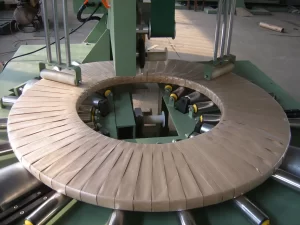
2. Key Technical Specifications and Considerations
While specifications vary greatly depending on the model and manufacturer, here’s a look at typical parameters for an industrial eye-through coil wrapper.
Disclaimer: The parameters listed below serve as a general guide and may not precisely match the equipment shown in the video or every available model. For exact specifications tailored to your application, direct consultation is recommended.
Core Machine Capabilities
- Machine Type: Horizontal Orbital Stretch Wrapper (Eye-Through Design)
- Coil Handling Orientation: Typically horizontal (eye vertical), though other configurations exist.
- Suitable Coil Materials: Ferrous and non-ferrous metals (steel, aluminum, copper), wire, cable, hoses, pipes, tires, bearings, plastic extrusions.
Performance Metrics
- Maximum Coil Outer Diameter (OD): Commonly ranges from 1000mm up to 2500mm or more. Example Range: ~1500mm
- Coil Width Range: Adjustable to accommodate various widths. Example Range: 100mm - 800mm
- Maximum Coil Weight: Varies significantly based on machine build. Example Range: 500kg - 5000kg+
- Operational Speed (Throughput): Dependent on coil size, wrap pattern, and automation level. Example: Up to 30-60 coils per hour
- Wrapping Ring Speed: Adjustable RPM to control film application rate.
- Film Overlap Rate: Adjustable (e.g., 10%-90%) via PLC control.
Physical & Electrical
- Power Requirements: Typically 380V/480V, 50/60Hz, three-phase. Needs confirmation based on location.
- Machine Dimensions (Approx.): Length: ~6000mm; Width: ~3400mm; Height: ~2700mm (Highly variable)
- Machine Weight (Approx.): ~2800kg+ (Dependent on size and features)
- Environmental Protection: Often designed to IP54 or IP55 standards for resistance to dust and water ingress.
Control & Safety
- Control System: PLC (Programmable Logic Controller) with Touchscreen HMI (Human-Machine Interface). Allows recipe storage for different coil types.
- Film Tension Control: Electronic, adjustable tension control ensures consistent wrap tightness without damaging the product. Dynamic adjustment capabilities are common.
- Safety Systems: Mandatory features include emergency stops, safety fencing or light curtains, interlocked access doors, and automated fault detection alarms.
Consumables & Support
- Film Compatibility: Designed primarily for LLDPE (Linear Low-Density Polyethylene) stretch film. Compatibility with other films like Polypropylene might be possible.
- Film Roll Dimensions: Specific maximum outer diameter (e.g., ~250mm), inner core diameter (e.g., 76mm/3"), and film width (e.g., 100mm-500mm).
- After-Sales Service: Availability of technical support, spare parts, and preventative maintenance programs is crucial.
3. From the Shop Floor: Real-World Applications and Benefits
Let's look at where these machines really shine on the factory floor, addressing common challenges fabricators and manufacturers face:
1. Heavy Industry Coil Transportation: Ensuring Structural Integrity
For industries handling heavy coils of steel, aluminum, or copper, maintaining coil shape and preventing surface damage during transit is paramount. Unsecured coils can telescope (inner wraps shifting out), suffer edge damage from handling equipment, or develop surface corrosion from exposure. Eye-through wrapping provides a tight, multi-layered barrier that:
- Unitizes the coil: Prevents shifting and telescoping.
- Protects surfaces: Shields against scratches, dents, dirt, and moisture.
- Enhances stability: Makes coils safer and easier to handle with forklifts or cranes.
This protection is vital for ensuring the material arrives at its destination in prime condition, avoiding costly rejections or rework.
2. Cable and Wire Manufacturing: Preserving Product Quality
Manufacturers of electrical cables, communication wires, and fiber optics need to protect their products not just physically, but also from environmental factors that could compromise performance. The eye-through film wrapping machine delivers:
- Consistent containment: Keeps coiled cables neat and prevents unwinding or tangling.
- Environmental shielding: Creates a barrier against dust, moisture, and UV radiation (with appropriate film) that could degrade insulation or affect signal integrity.
- Professional presentation: Ensures products arrive looking clean and well-packaged, reflecting quality.
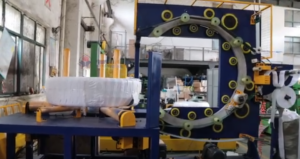
big coil wrapping machine 3. Custom Fabrication & Diverse Materials: Adaptability is Key
Plants fabricating custom coils, or those handling a variety of materials like hoses, tubes, profiles, or even tires, benefit from the machine's adaptability. Key advantages include:
- Handling irregular shapes: Orbital wrapping conforms well even to products that aren't perfectly symmetrical coils.
- Tailored protection: Wrapping programs can be adjusted for different product dimensions, weights, and required levels of protection.
- Material compatibility: Works effectively across a wide range of materials, providing a versatile packaging solution.
4. Operational Efficiency: More Than Just Wrapping
Beyond pure protection, these automated systems offer significant operational benefits. We often hear from plant managers about the immediate impact on:
- Labor Reduction: Automating the wrapping process frees up personnel previously assigned to manual wrapping, allowing them to focus on higher-value tasks.
- Consistency: Machine wrapping provides a uniform, repeatable wrap quality that manual methods can rarely achieve.
- Material Savings: Precise tension control and pre-stretch mechanisms can optimize film usage, reducing consumption compared to manual wrapping or less sophisticated machinery.
- Increased Throughput: Automated wrapping is significantly faster than manual methods, helping to eliminate bottlenecks in the packaging and shipping stages.
4. Choosing the Right Coil Packaging Machine
Selecting the ideal eye-through wrapper requires careful consideration of your specific needs:
- Coil Dimensions & Weight: Ensure the machine's capacity matches your product range (min/max diameter, width, weight).
- Throughput Requirements: Match the machine's speed to your production output.
- Level of Automation: Consider integration with existing conveyor lines, automatic labeling, etc.
- Film Type & Features: Check compatibility with desired film types and features like pre-stretch ratio.
- Budget & ROI: Balance initial investment against long-term savings in labor, material, and damage reduction.
- Vendor Support: Evaluate the availability of technical support, training, and spare parts.
5. Maintaining Your Investment: Tips for Longevity
Like any critical piece of equipment, regular maintenance is key to ensuring reliable performance and maximizing the lifespan of your coil wrapper:
- Regular Cleaning: Keep sensors, rollers, and the film carriage free of dust and debris.
- Lubrication: Follow the manufacturer's schedule for lubricating moving parts like bearings and chains.
- Inspect Wear Parts: Regularly check film rollers, cutting blades, and drive belts for wear and tear.
- Sensor Checks: Ensure safety sensors and positioning sensors are clean and functioning correctly.
- Software Updates: Keep the PLC software updated if recommended by the manufacturer.
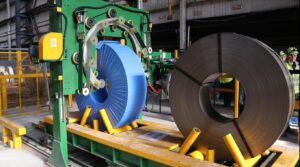
coil wrapping machine fhope Conclusion
Investing in an eye-through coil packaging machine is a strategic move for any operation handling coiled materials. It directly addresses the critical need for product protection during storage and transit, while simultaneously offering tangible benefits in operational efficiency, labor savings, and material usage. By automating and optimizing the wrapping process, these machines help ensure your valuable products reach their destination securely and cost-effectively, bolstering your bottom line and customer satisfaction.
https://www.fhopepack.com/Coil_packing_machine.html
For specific inquiries or to discuss how this technology can fit into your operations, contact us at: info@fhopepack.com

